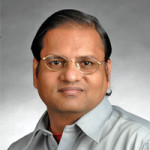Opportunities for Cotton in Non-Plastic Advanced Textiles
There is growing need and interest for plastic free nonwovens and advanced textiles, based on discussions during the 2023 World of Wipes international conference in Atlanta.
The conference is organized by the Association of the Nonwoven Fabrics Industry-INDA.
Growing regulations on the use of plastic-based products in the European Union and in the United States have heightened the need for the nonwovens and advanced textiles sector to look for alternatives to synthetic materials. Conference talks focused heavily on sustainability and the efforts by the global nonwovens sector to become carbon neutral.
The nonwovens and advanced textiles industry is moving towards an interesting spot to develop sustainable materials at competitive price levels. There are enormous opportunities for cellulosics such as pulp and cotton and other natural fibers such as flax and hemp in developing single use and durable nonwovens.
Given the quantity of nonwovens that come out of high-speed machines that can operate at 1200 m/min, there may not be enough non-plastic materials to meet the need in the immediate future, stated C.K. Wong, Chairman and CEO of Hong Kong-based U.S. Pacific Nonwovens, who has been in the industry for over 53 years.
Seshadri Ramkumar (left) with C.K. Wong (Photo: Seshadri Ramkumar)
Cotton can find new opportunities in the nonwovens sector as the cost will be competitive with bioplastics, added Wong. The industry has been successful in developing food packaging and medical products using bio-based materials such as PLA. Japan’s AsahiKASEI has been leading in the development of spunbond nonwovens using cotton linters to develop products for wipes and cosmetics industry.
Consumers like green products but expect products with good functionality at similar cost levels as synthetic-based nonwovens, which is a challenge for the industry.
“The nonwoven industry is transitioning to less plastic-based raw materials,” stated Tom Carlyle, Nonwovens Commercial Manager-Americas at Lenzing Fibers. “Consumers are becoming curious about resources, which will drive innovation. Furthermore, growing regulations such as the EU Single-Use Plastic Directive will necessitate the immediate need.”
“Spunlace (hydro entangling) technology is employed in China to develop virgin cotton-based nonwovens with six or more lines running,” said Oliver Doring, Director of Sales & Marketing at Trutzschler Nonwovens. Two spunlace lines are developing cotton-based spunlace nonwovens in India, and an additional line which can develop cotton-based wipes will be online in six weeks.











